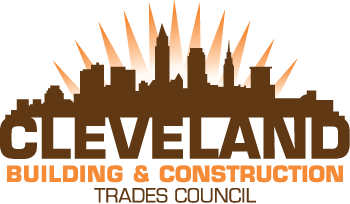Cleveland Home to Nation’s Largest Mass Timber Project
Cleveland Home to Nation’s Largest Mass Timber Project-INTRO
Cleveland Home to Nation’s Largest Mass Timber Project
A new Cleveland project is setting a record, as the work will result in the construction of the nation’s largest mass timber building.
Work has begun on The INTRO, a soon-to-be apartment building on West 25th Street in Cleveland.
According to Cleveland Building and Construction Trades Council Executive Secretary Dave Wondolowski, the project will bring approximately 250 jobs to CBCTC affiliated members.
The developer, Illinois-based Harbor Bay Real Estate Advisors, has chosen to complete the project with all union labor, Wondolowski said.
Dan Whalen, Vice President of Design and Development for Harbor Bay, went to high school in Willoughby and college at Case Western Reserve University. He expressed excitement about the first Harbor Bay property built in his native northeast Ohio.
“It’s been great, and my local connections helped get the project moving,” Whalen said. “I am glad to see it coming out of the ground.”
The INTRO will be built out of a material that is not used frequently in the U.S. The mass timber being used on this project is being imported from Austria. It is the first time many CBCTC affiliated members will touch this product.
According to the American Wood Council, mass timber is a category of framing styles typically characterized by the use of large solid wood panels for wall, floor and roof construction.
It also includes innovative forms of sculptural buildings, and non-building structures formed from solid wood panel or framing systems of 6 feet or more in width or depth. Products in the mass timber family include cross-laminated timber, nail-laminated timber, glue-laminated timber, dowel-laminated timber, structural composite lumber and wood-concrete composites.
The fire resistant material is designed to speed up construction and provide an eco-friendly alternative to traditional building materials, such as steel or concrete.
Harbor Bay VP of Construction, James Litwin described building with mass timber as “non-stop to the top.”
“Non-stop to the top is a more predictable building experience,” said Litwin. “It represents efficient movement through the process of construction.”
As part of the development and because the material is so new to many American tradesmen and tradeswomen, Litwin said Harbor Bay will provide a training model for carpenters to practice and visualize the process of the construction.

